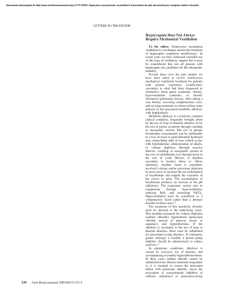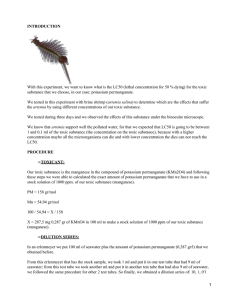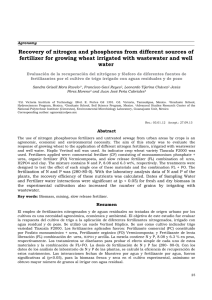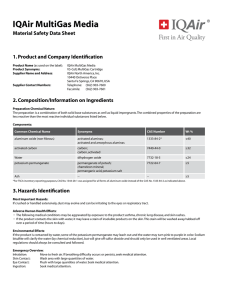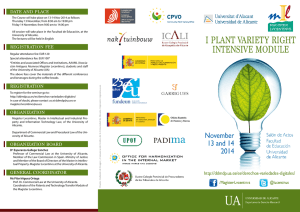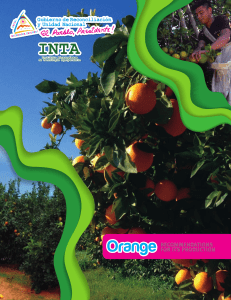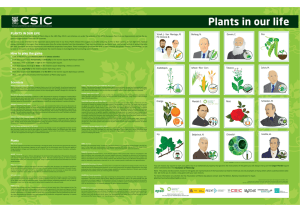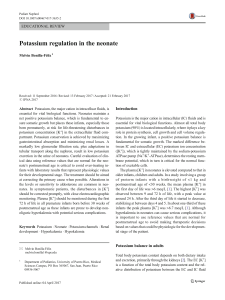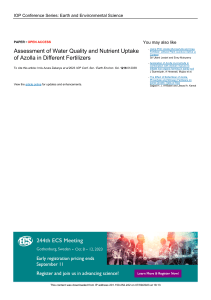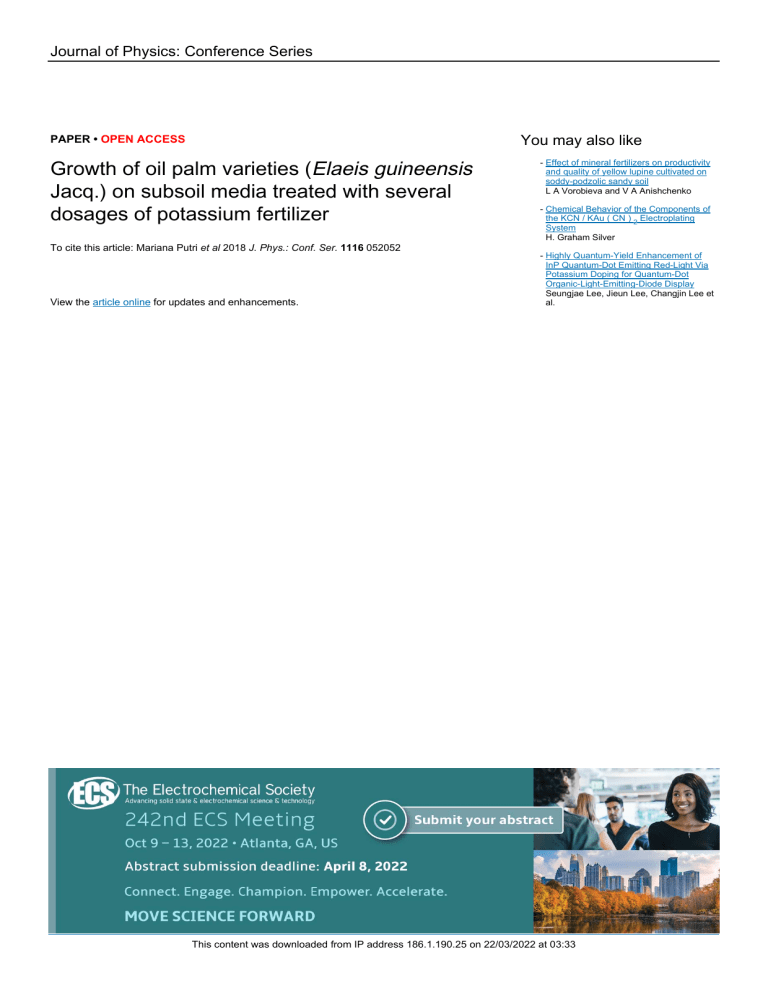
Journal of Physics: Conference Series You may also like PAPER • OPEN ACCESS Growth of oil palm varieties (Elaeis guineensis Jacq.) on subsoil media treated with several dosages of potassium fertilizer To cite this article: Mariana Putri et al 2018 J. Phys.: Conf. Ser. 1116 052052 View the article online for updates and enhancements. - Effect of mineral fertilizers on productivity and quality of yellow lupine cultivated on soddy-podzolic sandy soil L A Vorobieva and V A Anishchenko - Chemical Behavior of the Components of the KCN / KAu ( CN ) 2 Electroplating System H. Graham Silver - Highly Quantum-Yield Enhancement of InP Quantum-Dot Emitting Red-Light Via Potassium Doping for Quantum-Dot Organic-Light-Emitting-Diode Display Seungjae Lee, Jieun Lee, Changjin Lee et al. This content was downloaded from IP address 186.1.190.25 on 22/03/2022 at 03:33 SEMIRATA- International Conference on Science and Technology 2018 IOP Conf. Series: Journal of Physics: Conf. Series 1116 (2018) 052052 IOP Publishing doi:10.1088/1742-6596/1116/5/052052 Growth of oil palm varieties (Elaeis guineensis Jacq.) on subsoil media treated with several dosages of potassium fertilizer Mariana Putri1*, Erwin Nyak Akoeb2, Erwin Masrul Harahap3 and Hamidah Hanum3 1 Post graduate of Agrotechnology, Agriculture Faculty, University of Sumatera Utara, Jalan Prof A. Sofyan No.3 Kampus USU Padang Bulan. Medan 20115 2 Oil Palm Research Centre, Jalan Brigjen Katamso No. 51 Kampung Baru, Medan 20158 3 Agrotechnology Department, Agriculture Faculty, University of Sumatera Utara, Jalan Prof A. Sofyan No.3 Kampus USU Padang Bulan. Medan20115 *E-mail: [email protected] Abstract. The objective of the research was to determine the appropriate dose of absorption and growth in some high yielding varieties of oil palm, knowing superior varieties of oil palm plant with to potassium nutrients and knowing the interaction between varieties and Potassium fertilizer on the of potassium nutrient absorption. This research was conducted in Oil Palm Research Centre at the District of Deli Serdang, the Province of North Sumatra. The method used was Randomized Block Design Factorial with 2 factors applied in to 5 varieties oil palm and K fertilizer (3 fertilizer recommendation) with 3 replications. The results of this research showed that factors of oil palm varieties have significant effect on the height of the plant, stem diameter and Potassium leaves content. Giving potassium fertilizer have significant effect on plant height and potassium leaves content. 1. Introduction Oil palm plays an important role in increasing the country's foreign exchange in Indonesia, where Indonesia is the world's major palm oil producer. Besides oil palm plantations in the absorption of labor and improvement in Indonesia. The area of oil palm cultivation in Indonesia is also increasing from year to year reaching 11.3 million ha in 2015 consisting of large estates and smallholders plantations [1]. The potassium nutrient element is present in all parts of the palm oil plant (roots, stems, leaves, etc.) in considerable amounts. This element has a relatively large size hydrated form, then this element is not strongly absorbed colloid surface charge so easy to leach from the soil. This situation causes the availability of element K in the soil is generally low when the plant needs for this element is almost equal to the needs of N [2]. This study aims to determine the appropriate dose of absorption and growth in some high yielding varieties of Oil Palm, knowing superior varieties of Oil Palm plant with to Potassium nutrients and knowing the interaction between varieties and Potassium fertilizer on the of Potassium nutrient absorption. Content from this work may be used under the terms of the Creative Commons Attribution 3.0 licence. Any further distribution of this work must maintain attribution to the author(s) and the title of the work, journal citation and DOI. Published under licence by IOP Publishing Ltd 1 SEMIRATA- International Conference on Science and Technology 2018 IOP Conf. Series: Journal of Physics: Conf. Series 1116 (2018) 052052 IOP Publishing doi:10.1088/1742-6596/1116/5/052052 2. Materials and Methods This research was conducted in Oil Palm Research Centre at the District of Deli Serdang, the Province of North Sumatra. The research used Factorial Random Block Design with 2 factors. The first factor is varieties (Avros 540, PPKS 239, Simalungun, Langkat and PPKS Avros 718). The second factor is K fertilizer which consists of without K fertilizer, 25% fertilizer recommendation, 50% fertilizer recommendation, 75% fertilizer recommendation and 100% fertilizer recommendation. Application of K fertilizer is given by way of sowing around the root of Oil Palm according to fertilizer recommendation treatment. The dosage of K fertilizer is also adjusted to the age of oil palm plantation. The observed variables were plant height (cm), stem diameter (mm), number of leaves (strands) and Potassium Leaf Content (%). Data were taken in 6 Months After Planting (MAP). The data were analyzed statistically using F-test and then following by Duncan Multiple Range Test at 5 % level. 3. Results and Discuss 3.1. Plant height (cm) The result of F-test showed that varieties and dosage of Potassium fertilizer were significantly affected plant height, whereas the interaction of varieties with Potassium fertilizer shows no significant difference. Different test of plant height of several palm oil varieties on Subsoil Media Treated with Several Dosages of Potassium Fertilizer can be seen in Table 1. Varieties with the highest plant height were obtained in PPKS Avros 718 varieties (V5) with 95.46 cm, while the lowest of varieties were PPKS 239 (V2) with 78.12 cm (Table 1). This shows that PPKS 718 varieties are varieties that respond to plant height increase when compared with other varieties. Each variety shows that the genetic variation factor of each variety, which has a different genetic makeup follows its parent nature, so that the height of the plant is different. The genetic variation is caused by genetic inheritance and environmental factor [3]. Potassium fertilizer dosage with the highest plant height were obtained in 25% fertilizer recommendation (K1) with 96.46 cm, while the lowest of Potassium fertilizer dosage were 75% fertilizer recommendation (K3) with 81.57 cm. This suggests that excessive amounts of potassium will affect plant height. The more the amount of potassium given it will be toxic to the plant itself. In order to play a role well in the growth process, levels potassium must be sufficient and balanced. If mineral imbalance happens, deficiency or excess will inhibit the growth process [4]. Table 1. Plant High Several Varieties of Oil Palm with Treatment of Potassium Fertilizer Dosage Potassium Fertilizer Dosage (%) Varieties Average K0 K1 K2 K3 K4 ....................................(cm)................................. 77.68 99.22 84.50 89.68 84.58 87.13 abc V1 (Avros 540) 79.28 76.11 90.96 67.98 76.28 78.12 c V2 (PPKS 239) 84.34 107.37 103.87 86.19 85.34 93.42 ab V3 (Simalungun) 78.43 94.54 93.93 64.40 83.56 82.97 c V4 (Langkat) 91.59 105.04 97.77 99.62 83.30 95.46 a V5 (PPKS Avros 718) 82.26 b 96.46 a 94.21 a 81.57 b 82.61 b Average 87.42 Explanation: The numbers followed by the same letter on the same row or column is not different significant according to Duncan Multiple Range Test at 5% level 3.2. Stem diameter (mm) The result of F-test showed that varieties was significantly affected stem diameter, whereas the dosage of Potassium fertilizer and the interaction of varieties with Potassium fertilizer shows no significant difference. Different test of stem diameter of several palm oil varieties on Subsoil Media Treated with Several Dosages of Potassium Fertilizer can be seen in Table 2. 2 SEMIRATA- International Conference on Science and Technology 2018 IOP Conf. Series: Journal of Physics: Conf. Series 1116 (2018) 052052 IOP Publishing doi:10.1088/1742-6596/1116/5/052052 Varieties with the highest stem diameter were obtained in Simalungun varieties (V3) with 43.18 mm, while the lowest of varieties were PPKS 239 (V2) with 35.35 mm (Table 2). Table 2. Diameter Stem of Some Oil Palm Varieties With Treatment of Potassium Fertilizer Dosage Potassium Fertilizer Dosage (%) Varieties Average K0 K1 K2 K3 K4 ....................................(mm)................................. V1 (Avros 540) 36.86 43.06 36.54 38.51 38.98 38.79 bc 39.32 34.49 36.14 31.40 35.37 35.35 c V2 (PPKS 239) V3 (Simalungun) 42.94 47.36 45.65 42.11 37.86 43.18 a V4 (Langkat) 35.72 40.49 40.13 30.76 38.37 37.10 bc V5 (PPKS Avros 718) 39.11 41.22 39.44 43.23 38.93 40.39 ab Average 38.79 41.32 39.58 37.20 37.90 38.96 Explanation: The numbers followed by the same letter on the same row or column is not different significant according to Duncan Multiple Range Test at 5% level This is allegedly closely related to the genetic factors of plants, which in certain phases of plants show or show different appearance with other plants according to their respective varieties. Specific plant growth patterns depend on the genetic and environmental variations that affect them [5]. Dosage of Potassium fertilizer and the interaction of varieties with Potassium fertilizer shows no significant difference. Application of potassium has no significant effect on stem diameter. Potassium (K) is one element of macro nutrients which are essential for growth and development plant. Potassium has an activator role some enzymes in plant metabolism. Potassium play a role in protein and carbohydrate synthesis, as well as improving the photosynthesis translocation to all parts plants [6]. 3.3. Number of Leaves (strands) The result of F-test showed that varieties, dosage of Potassium fertilizer and interaction of varieties with Potassium fertilizer were not significantly affected number of leaves. Different test of number of leaves of several palm oil varieties on Subsoil Media Treated with Several Dosages of Potassium Fertilizer can be seen in Table 3. Varieties with the highest leaf number were obtained on Simalungun varieties with a dose of 25% recommendation of Potassium fertilizer (V1K1) with 12.78 strands, while the lowest were Langkat varieties with 75% recommendation of Potassium fertilizer (V4K3) with 10.44 strands (Table 3). Table 3. Number of Leaves of Some Varieties of Oil Palm with Treatment of Potassium Fertilizer Dosage Potassium Fertilizer Dosage (%) Varieties Average K0 K1 K2 K3 K4 ....................................strands................................. V1 (Avros 540) 12.11 12.78 11.56 11,.6 12.11 12.02 V2 (PPKS 239) 12.44 11.56 11.89 11.22 11.67 11.76 V3 (Simalungun) 12.56 12.67 12.56 12.44 11.44 12.33 V4 (Langkat) 11.33 11.78 12.22 10.44 12.67 11.69 V5 (PPKS Avros 718) 11.44 11.78 10.89 12.00 12.00 11.62 Average 11.98 12.11 11.82 11.53 11.98 Explanation: The numbers followed by the same letter on the same row or column is not different significant according to Duncan Multiple Range Test at 5% level Potassium applications can improve the morphology of oil palm. Plants lacking element K usually easy to fall, sensitive to disease, results and quality results are low, and can cause symptoms of ammonium poisoning, while the excess K causing the plant to lack Mg and Ca nutrients [7]. Excessive 3 SEMIRATA- International Conference on Science and Technology 2018 IOP Conf. Series: Journal of Physics: Conf. Series 1116 (2018) 052052 IOP Publishing doi:10.1088/1742-6596/1116/5/052052 K supply can cause plant growth to be inhibited or dwarfs [8]. 3.4. Potassium Leaves Content (%) The result of F-test showed that varieties and dosage of Potassium fertilizer were significantly affected Potassium leaves content, whereas the interaction of varieties with Potassium fertilizer shows no significant difference. Different test of Potassium leaves content of several palm oil varieties on Subsoil Media Treated with Several Dosages of Potassium Fertilizer can be seen in Table 4. Varieties with the highest Potassium leaves content were obtained in PPKS Avros 540 varieties (V1) with 1.22%, while the lowest of varieties were Langkat (V4) and PPKS Avros 718 (V5) with 0.96% (Table 4). Potassium fertilizer dosage with the highest Potassium leaves content were obtained in 75% fertilizer recommendation (K3) with 1.17%, while the lowest of Potassium fertilizer dosage were with no Potassium fertilizer (K0) with 0.93%. Table 4. Potassium Leaves Content Several Varieties of Oil Palm With Treatment of Potassium Fertilizer Dosage Potassium Fertilizer Dosage (%) Varieties Average K0 K1 K2 K3 K4 .................................%.................................... 1.08 1.05 1.31 1.34 1.34 1.22 a V1 (Avros 540) 1.16 1.13 1.06 1.19 1.11 1.13 ab V2 (PPKS 239) 0.79 1.16 1.21 1.17 1.02 1.07 bc V3 (Simalungun) 0.81 0.87 1.01 1.00 1.11 0.96 c V4 (Langkat) 0.81 0.85 0.99 1.15 0.98 0,96 c V5 (PPKS Avros 718) 0.93 c 1.01 bc 1.12 ab 1.17 a 1.11 ab Average Explanation: The numbers followed by the same letter on the same row or column is not different significant according to Duncan Multiple Range Test at 5% level The highest potassium content of leaves was found in the Avros 540 variety. This suggests that Avros 540 varieties are able to absorb potassium in leaves more effectively than other varieties. These results indicates that each plant variety has different responses to its environmental conditions. Differences in genetic makeup is one of the factors causing plant appearance diversity. The diversity of plant appearance due to differences in genetic makeup is always and may occur even if the plants used are of the same kind [9]. 4. Conclusions Factors of oil palm varieties have significant effect on the height of the plant, stem diameter and Potassium leaves content. Giving Potassium fertilizer have significant effect on plant height and Potassium leaves content. PPKS Avros 718 varieties is the best variety in increasing the height of oil palm crop, while the Simalungun varieties is the best variety in increasing stem diameter. 25% fertilizer recommendation is the best recommendation for Potassium fertilizer in increasing the height of oil palm crop, stem diameter and number of leaves. References [1] Agriculture Department 2015 Table Area of Plantation Productivity and Productivity in Indonesia Year 2011-2015 Retrieved from http://www.deptan.go.id// on January 7 2018 [2] Feryono, Armaini and Yulia A E 2012 Online Journal Agrotechnology Department Faculty of Agriculture University of Riau [3] Welsh JR 1981 Genetic and Plant Breeding Translated by Johanis P Mogea from Fundamental of Plant Genetic and Breeding (Jakarta: Erlangga) 224 [4] Dwipartha P S, Suarsana I N and Suwiti N K 2014 Udayana Veterinary Bulletin 6 125 4 SEMIRATA- International Conference on Science and Technology 2018 IOP Conf. Series: Journal of Physics: Conf. Series 1116 (2018) 052052 [5] [6] [7] [8] [9] IOP Publishing doi:10.1088/1742-6596/1116/5/052052 Fried G H and Hademenos G J 2005 Biology Second Edition (Jakarta: PT Gelora Aksara Pratama) Marschner H 1995 Mineral Nutrion of Higher Plants Second Edition (London: Academic Press) Jones J B, Wolf B and Mills H A 1991 Plant Analysis Hand Book (Micro-macro Publishing Inc) Singh S P and Verma A B 2001 Indian J. Agron 46 182 Sitompul S M and Guritno B 1995 Plant Growth Analysis (Yogyakarta: Gadjahmada University Press) 5

